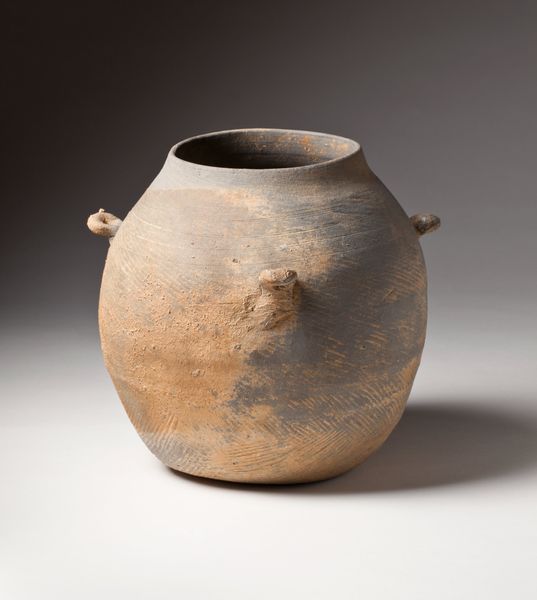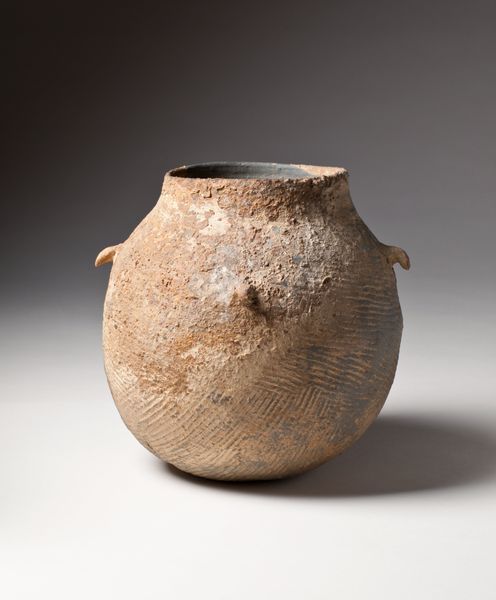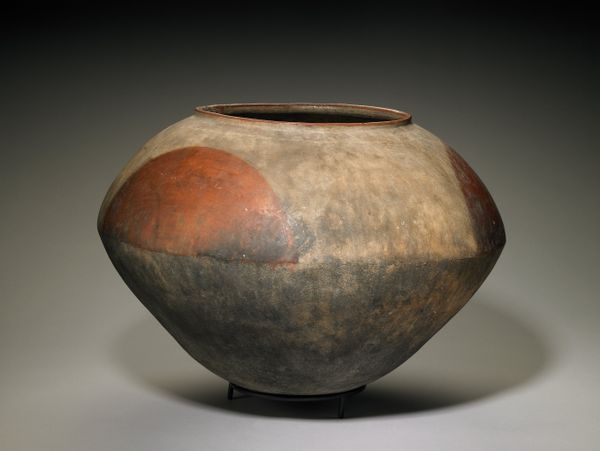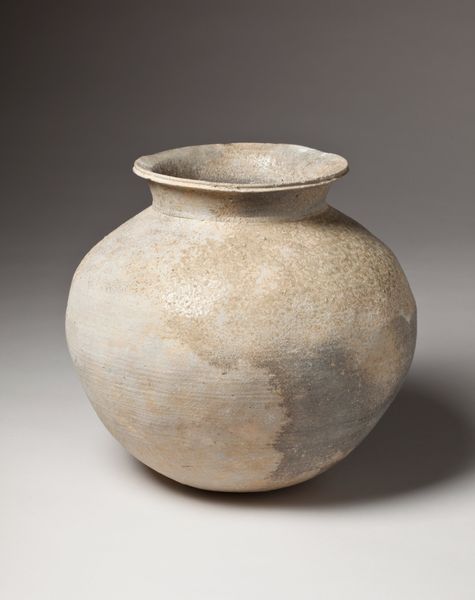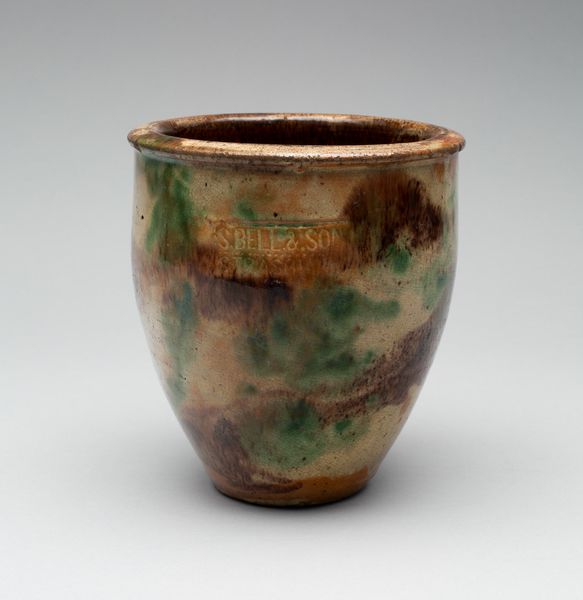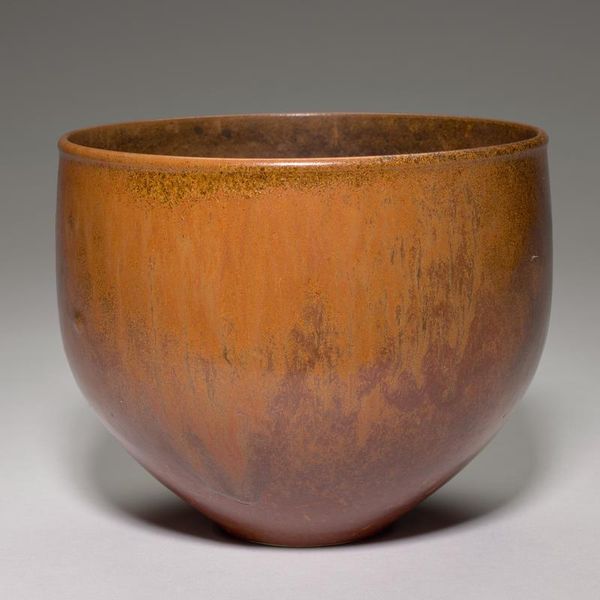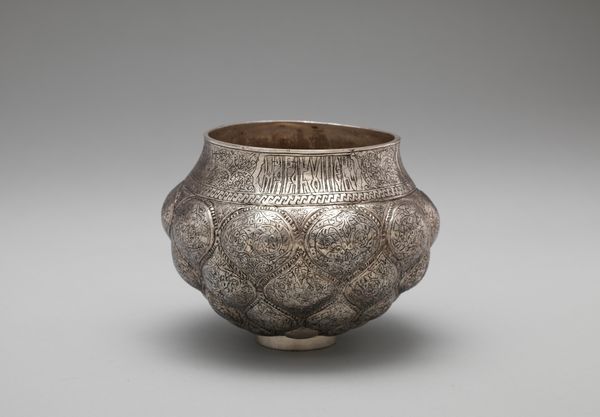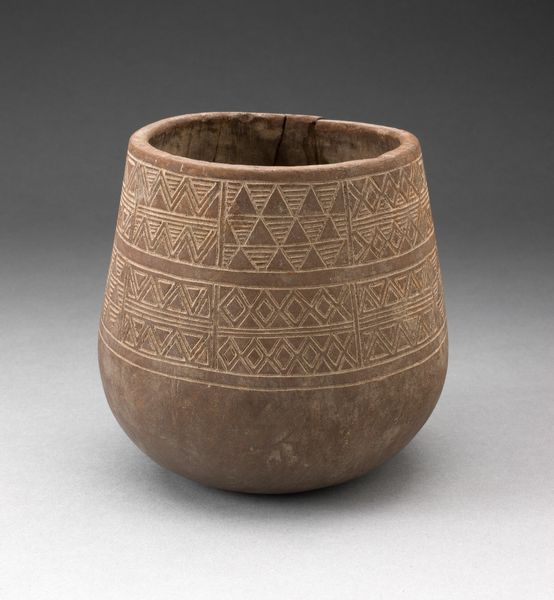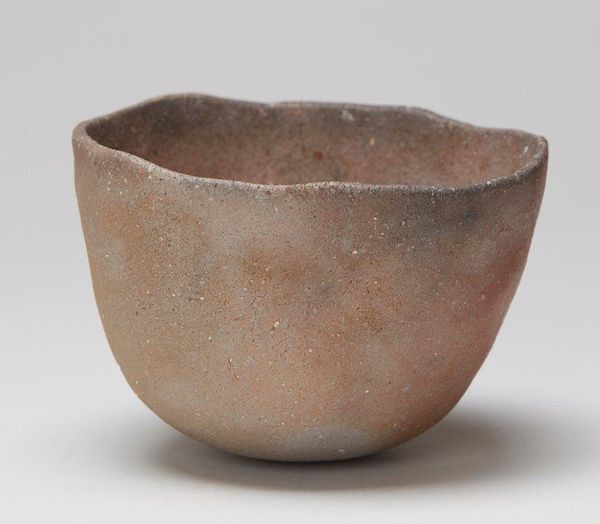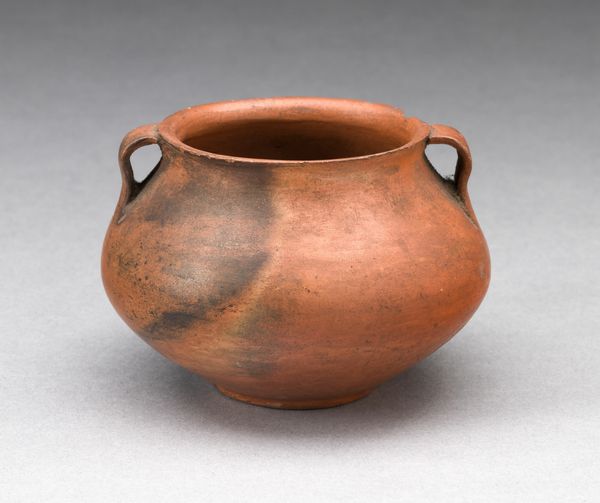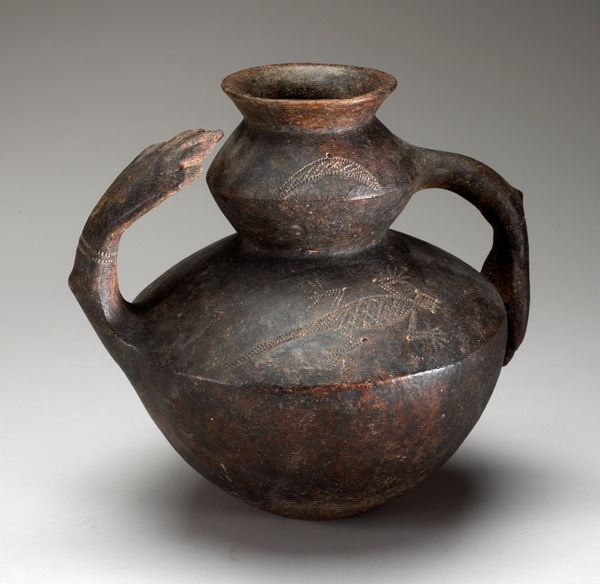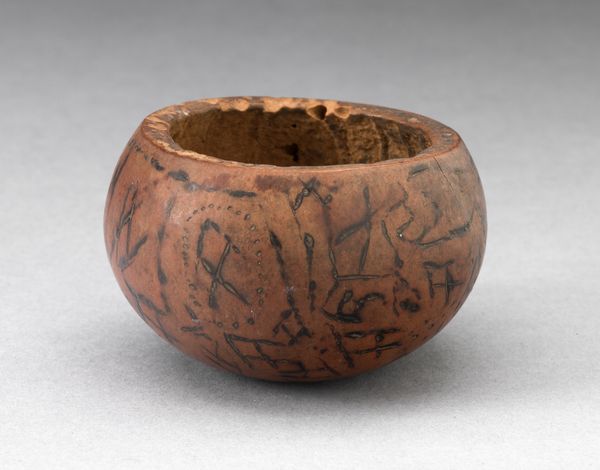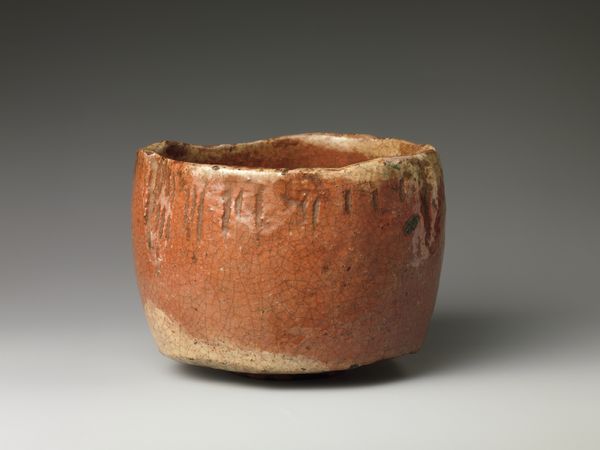
ceramic
#
medieval
#
asian-art
#
ceramic
Dimensions: H. 4 1/2 in. (11.4 cm); Diam. 4 5/8 in. (11.7 cm)
Copyright: Public Domain
Editor: So, this is Hon'ami Kōetsu's "Teabowl," made sometime between 1590 and 1610. It's currently held at the Metropolitan Museum of Art. What strikes me is the evident repair, those gold seams running through the ceramic. How do you interpret that? Curator: It's crucial to see the "Teabowl" not just as an object, but as a product of specific labor and social circumstances. Think about the historical context: Japan at the turn of the 17th century. This teabowl wasn’t made in isolation; it represents a sophisticated ceramic tradition and, moreover, a culture of consumption valuing the *act* of repair itself. Editor: Consumption? How does the act of repair fit into that? Curator: Kintsugi, the art of repairing with gold, elevates breakage and repair to a core design element. In this particular work, rather than concealing flaws, they are foregrounded using a precious material. It challenges our assumptions about value and perfection. In a materialist view, we're prompted to question why an object ‘marred’ by use or accident could be considered beautiful, or even more valuable. Editor: That makes me consider how the gold also reflects larger social and economic forces, as you said, as well as ideas about commodity. It moves beyond the purely aesthetic, right? Curator: Exactly. By focusing on materiality and production, we recognize the object as entangled in wider systems of cultural meaning, economic exchange, and even labor exploitation. This specific ceramic and repair practice redefines our expectations of production's lifespan and our attachment to consumption, especially in our culture today. Editor: I hadn’t considered it in light of commodity culture like that, it really reframes how I understand kintsugi's aesthetic value. Thanks for sharing your insight! Curator: Absolutely! Recognizing the interconnectedness between material objects, labor, and social values helps us decipher deeper levels of cultural significance embedded within a work like the "Teabowl."
Comments
No comments
Be the first to comment and join the conversation on the ultimate creative platform.

